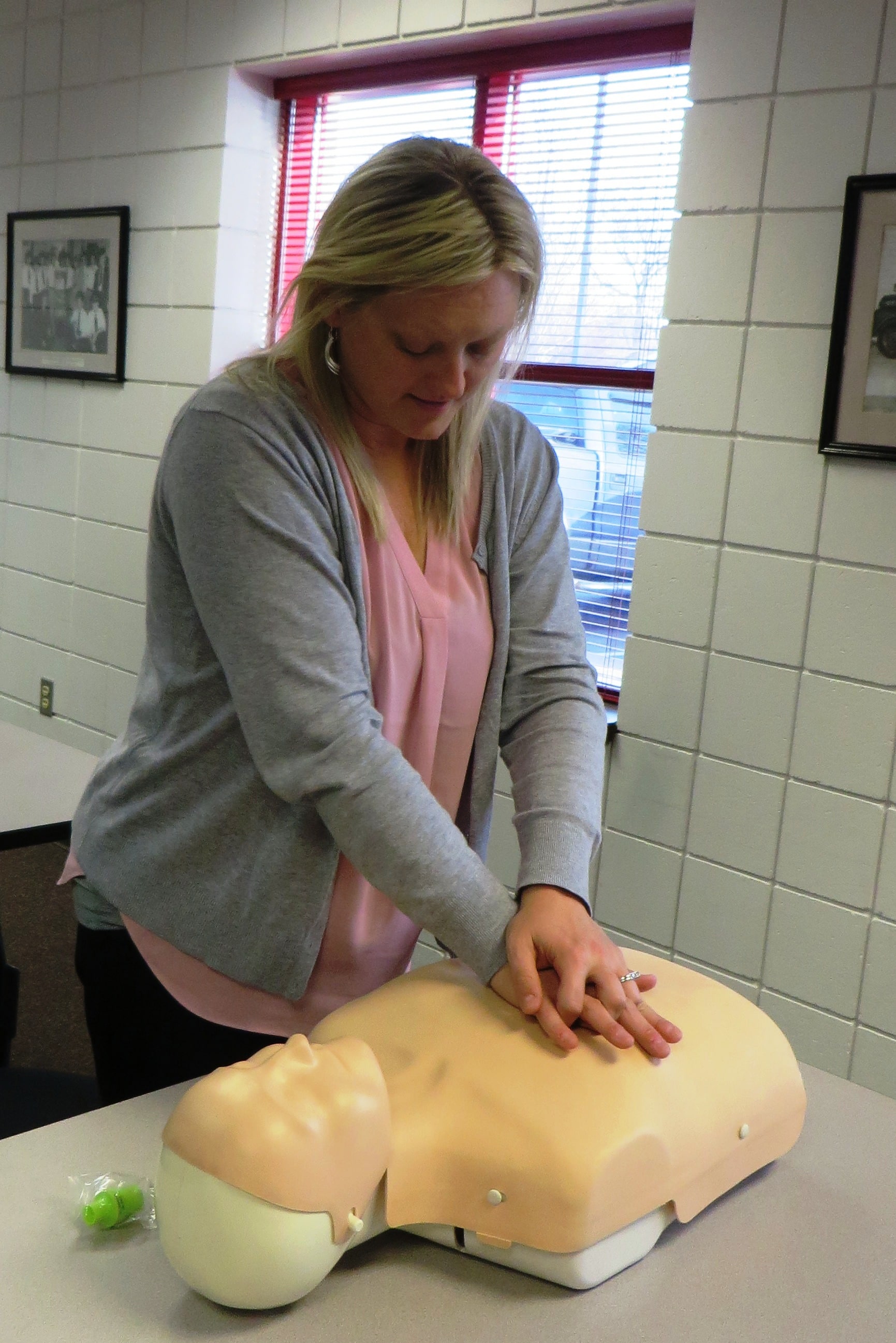by Cori Hilsgen
news@thenewsleaders.com
If someone had a heart attack or sudden cardiac arrest near you, would you know what to do?
Twenty local residents recently participated April 16 in a cardiopulmonary resuscitation and automated external defibrillator heart-saver class at the St. Joseph Community Fire Station to better prepare themselves for this type of emergency.
Shirlie Brill, who has been a member of the St. Joseph Fire Department for 14 years, said they offer the classes annually to help increase survival rates.
When someone is experiencing a heart attack, sudden cardiac arrest or other emergency, seconds and minutes matter. Knowing cardiopulmonary resuscitation and how to use an automated external defibrillator until first-responders can arrive, increases a patient’s chances of survival.
Participants in the class included Mary, 59, and Gary Sunderman, 62, husband and wife. Mary said she used to renew the class each year when she was a daycare provider but has not taken it for a number of years since she began working elsewhere. Gary said he took the class about three years ago at his place of employment. Mary said they “just want to be prepared if something happens.”
Tara Bayerl, 40, took the class several years ago but felt it was good to have a refresher because things change.
Francisco Mixteco, 33, was taking the class for the first time. He and his wife had also tried to register their 15-year-old daughter for the class but it was full. Mixteco said he felt it was very important to know what to do in situations where you could make a difference and save someone’s life.
Adam Novak, 15, took the class two years ago but wanted to refresh his skills to know how to help save a life.
Participants in the class learned how to do CPR and use an AED on adults and children and how to help with choking incidents. Practice drills included witnessed and unwitnessed events.
The class was instructed by Mark Baisley and Ryan Burgess from Mayo Clinic Ambulance. Baisley has been teaching classes for 33 years and Burgess has been teaching more than three years.
Both instructors emphasized class participants should not be afraid to use whatever skills they have learned and can remember. They stressed how important it is to start chest compressions and keep a patient’s blood flowing to send oxygen to the brain.
Baisley wanted area residents to be aware the Mayo Clinic name will now be on vehicles which were previously branded as Gold Cross Ambulances. This change became effective April 1 and should be complete by the end of the year.
According to the American Heart Association website, heart.org., more than 350,000 out-of-hospital cardiac arrests occur in the United States each year and only 12 percent of these people survive. In an emergency, you might be trying to save the life of someone you love, a child, a spouse, a parent or a friend.
About 70 percent of out-of-hospital cardiac arrests happen in homes and about 46 percent of people who experience an out-of-hospital cardiac arrest receive the immediate help they need before professional help arrives. Immediate cardiopulmonary resuscitation can double, or even triple, a person’s chance of survival.
By 2020, the American Heart Association hopes to train 20 million people in the lifesaving skills of cardiopulmonary resuscitation hoping to double out-of-hospital bystander cardiopulmonary resuscitation efforts.
According to the Centers for Disease Control and Prevention website, cdc.gov, heart disease is the leading cause of death for both men and women. Coronary Heart Disease is the most common type of heart disease. About 735,000 Americans have a heart attack each year; 525,000 are a first heart attack and 210,000 happen in people who have previously had a heart attack.
Major warning signs and symptoms of heart attacks include chest pain or discomfort; upper body pain or discomfort in the arms, back, neck, jaw or upper stomach; shortness of breath, nausea, lightheadedness or cold sweats.
A heart attack occurs when blood supply to the heart muscle stops and the heart muscle dies. A sudden cardiac arrest occurs when the heart suddenly stops pumping due to an electrical problem in the heart. A sudden cardiac arrest can occur at the same time as a heart attack.
Funding to pay for the annual classes, which are free to participants, usually comes from donations.
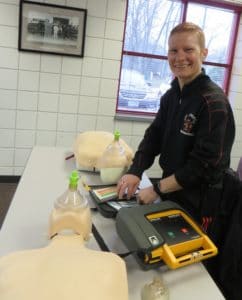
Shirlie Brill, a member of the St. Joseph Fire Department, helps with automated external defibrillator instruction April 16.
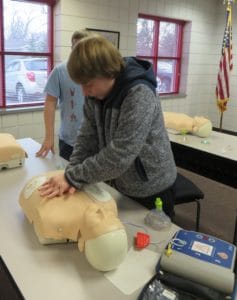
Participant Adam Novak practices chest compressions during adult automated external defibrillator instruction.
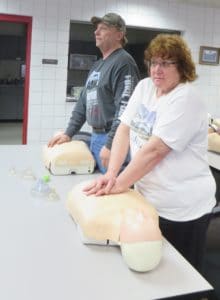
Participants Gary and Mary Sunderman, husband and wife, listen to Mayo Clinic Ambulance instructor Ryan Burgess explain how to begin adult cardiopulmonary resuscitation chest compressions
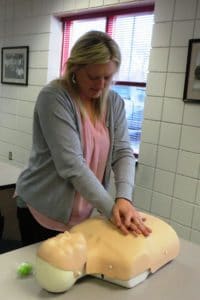
Participant Tara Bayerl practices adult chest compressions during the April 16 cardiopulmonary resuscitation class.
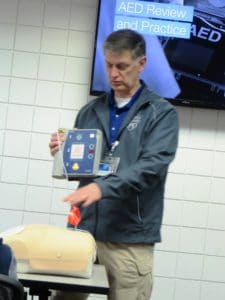
Mayo Clinic Ambulance instructor Mark Baisley instructs a class of 20 participants how to use an automated external defibrillator April 16 at the St. Joseph Community Fire Station.
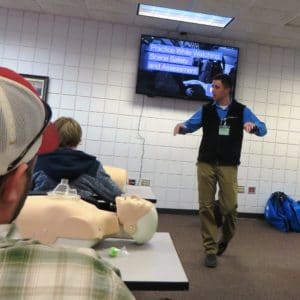
Mayo Clinic Ambulance instructor Ryan Burgess instructs a class of 20 participants on cardiopulmonary resuscitation scene safety and assessment April 16 at the St. Joseph Community Fire Station.
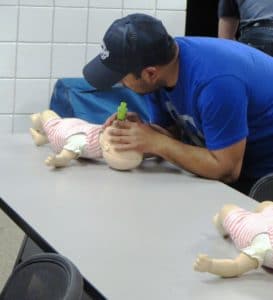
Participant Francisco Mixteco practices infant cardiopulmonary resuscitation April 16 at the St. Joseph Community Fire Station.



